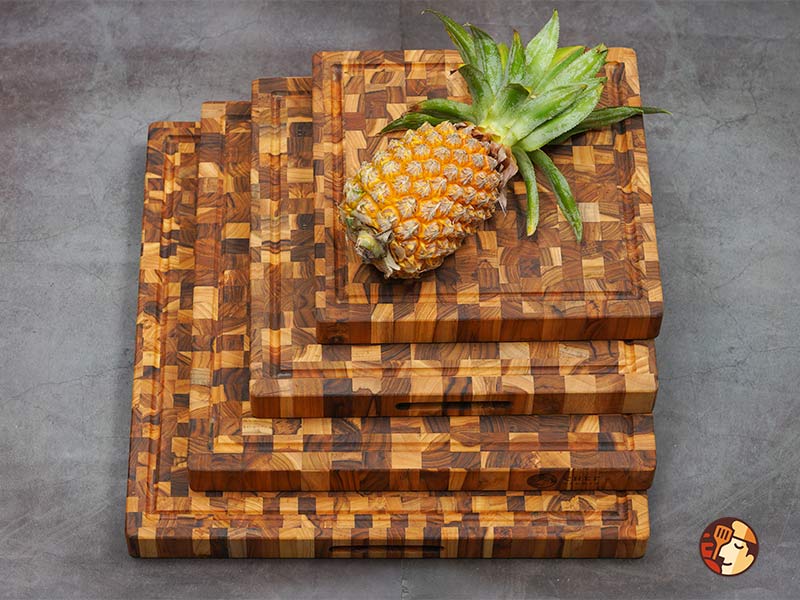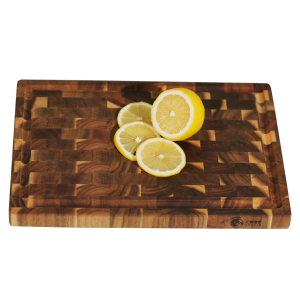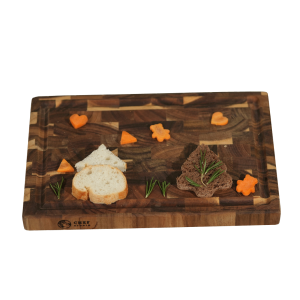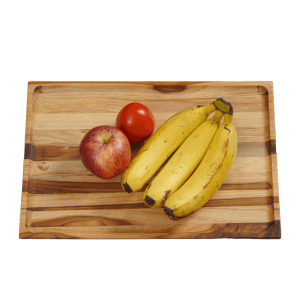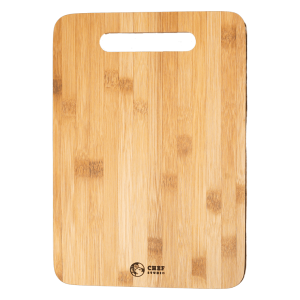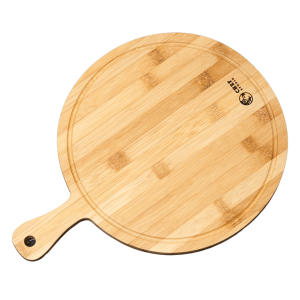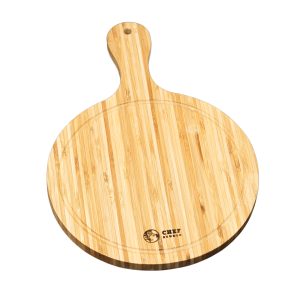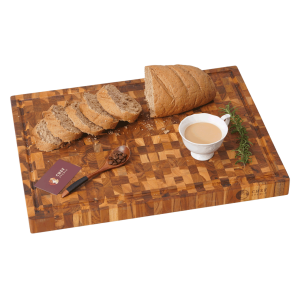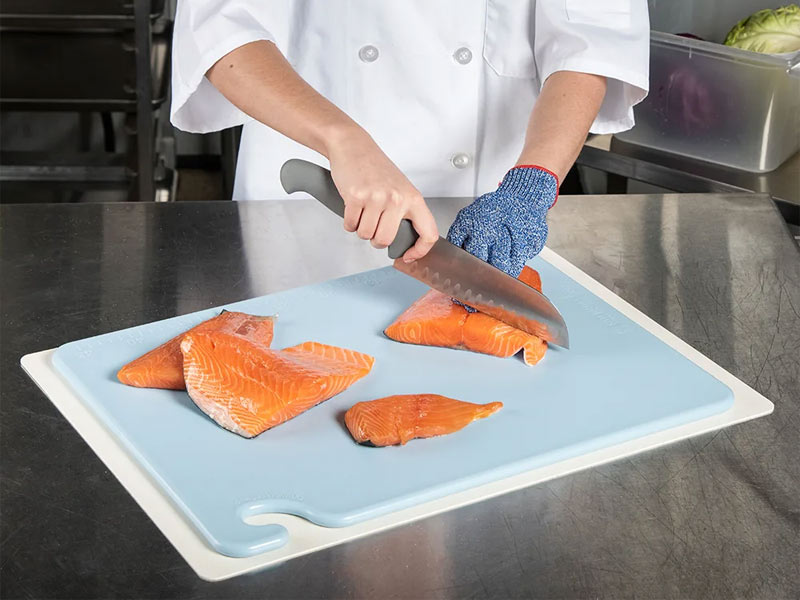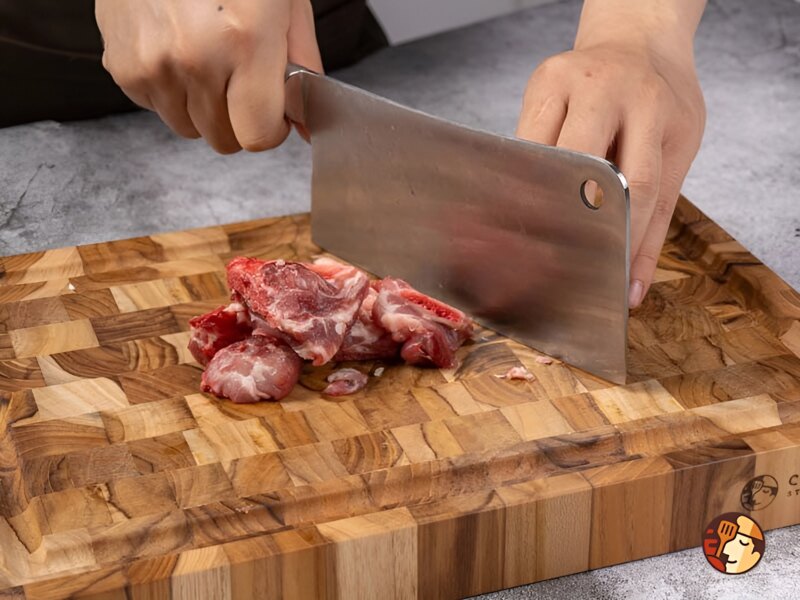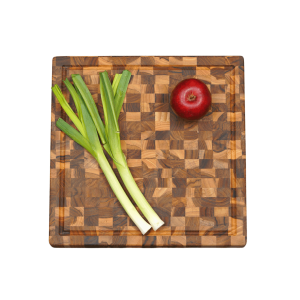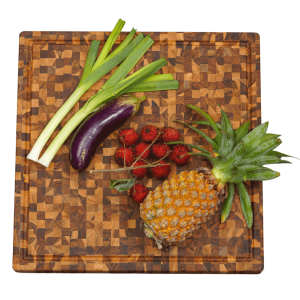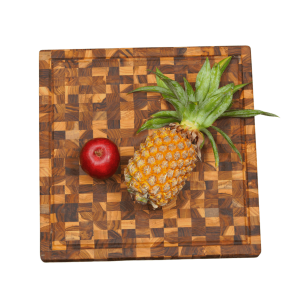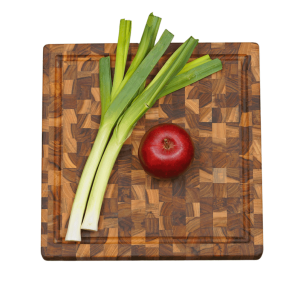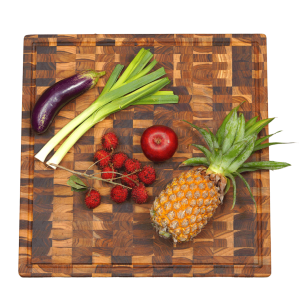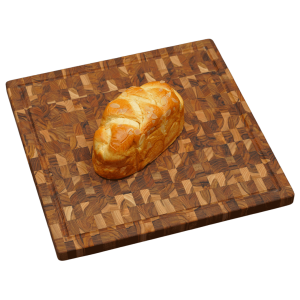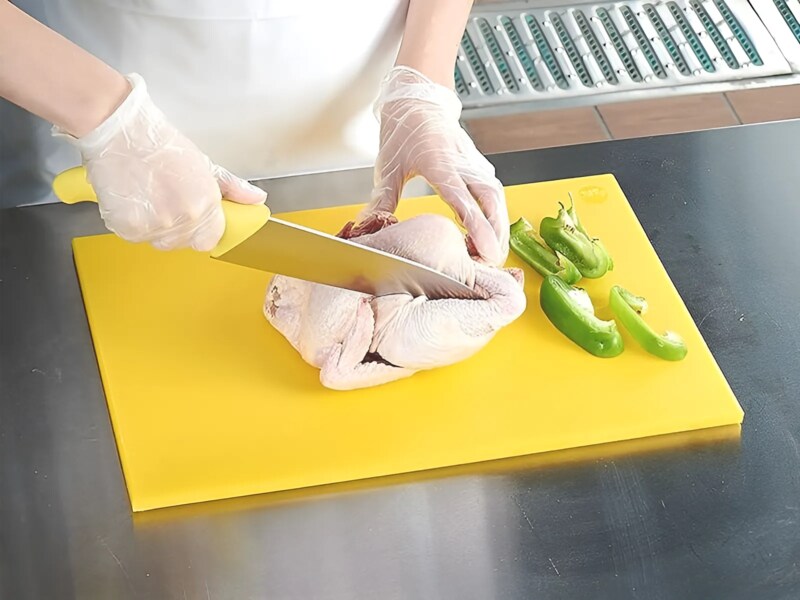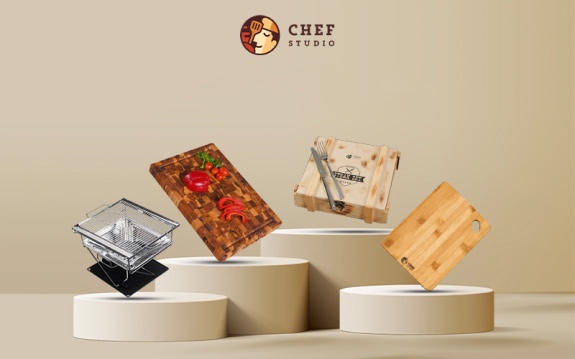Wood vs plastic cutting board for meat, chicken and vegetables
When it comes to cutting boards for meat, the debate between wood and plastic has long been ongoing. Each material comes with its own set of advantages and considerations, leaving many wondering: wood vs plastic cutting board for meat, chicken, and vegetables – which is better? Find out the answer in the article below!
Pros and Cons of wooden and plastic cutting board
When cooking in the kitchen, having the right cutting board is essential. Knowing about the pros and cons of the wood vs plastic cutting board for meat will help you choose the perfect one.
Wooden cutting board
Pros:
- Natural antibacterial properties: Wooden cutting boards, especially those made from hardwoods like maple or walnut, possess natural antibacterial properties that can help inhibit the growth of bacteria.
- Knife-friendly surface: Wooden boards are gentle on knife blades, helping to maintain their sharpness for longer periods.
- Aesthetically pleasing: Wooden cutting boards add a touch of warmth and elegance to any kitchen, making them a visually appealing choice.
- Durability: High-quality wooden cutting boards can last for many years with proper care and maintenance.
Cons:
- Porous material: Wood is porous, which means it can absorb moisture, juices, and food particles, potentially harboring bacteria if not cleaned thoroughly.
- Requires regular maintenance: Wooden cutting boards need to be regularly seasoned with mineral oil to maintain their integrity and prevent drying out or cracking.
- Not dishwasher safe: Most wooden cutting boards are not dishwasher safe and require handwashing to prevent warping or splitting.
Plastic cutting board
Pros:
- Non-porous surface: Plastic cutting boards are non-porous, making them resistant to moisture absorption and less likely to harbor bacteria.
- Easy to clean: Plastic boards are dishwasher safe and can be quickly sanitized at high temperatures, reducing the risk of cross-contamination.
- Lightweight and portable: Plastic cutting boards are lightweight and easy to transport, making them ideal for outdoor use or food preparation on the go.
- Affordable: Plastic cutting boards are often more affordable than their wooden counterparts, making them a budget-friendly option.
Cons:
- Knife damage: Plastic cutting boards can dull knife blades faster than wooden boards due to their harder surface.
- Prone to scratching: Over time, plastic cutting boards can develop deep scratches and grooves, providing a breeding ground for bacteria.
- Less aesthetic appeal: Plastic cutting boards may lack the aesthetic appeal of wooden boards and can look worn or discolored with use.
Both wooden and plastic cutting boards have their unique advantages and disadvantages when it comes to meat preparation. Ultimately, the choice between the two depends on your personal preferences, budget, and maintenance preferences. Consider factors such as hygiene, durability, and aesthetics when selecting the right cutting board for your kitchen.
Wood vs plastic cutting board for meat and chicken – Which is better?
When it comes to choosing a wood or plastic cutting board for meat or raw chicken, the debate often arises. Each material has its own set of advantages and considerations, making the decision a matter of personal preference and practicality.
Wood cutting board
- Wood cutting boards, particularly those made of hardwoods such as maple or walnut, have natural antibacterial characteristics that hinder bacterial growth, making them a safe choice for handling raw meat and chicken.
- Wood boards are gentle on knife edges, helping to keep them sharp over time and decreasing wear on your knives after meat.
- Wood cutting boards give warmth and elegance to the kitchen with their natural wood grain and rich colors.
Chef Studio specializes in crafting and supplying high-quality cutting boards for meat and vegetables with juice grooves such as Acacia cutting boards, bamboo, Teak wooden cutting boards, and more at affordable prices. Explore our online store for a wide range of products!
Plastic cutting board
- Plastic cutting boards are dishwasher-safe and easy to clean after cutting meat, making them convenient for busy kitchens. They can withstand high temperatures and harsh cleaning agents without warping or damage.
- Plastic cutting boards have a non-porous surface that resists moisture absorption and bacterial growth, enhancing food safety, especially after handling raw meat.
- Plastic cutting boards are generally more affordable than wood boards, making them a cost-effective choice.
Considerations plastic or wood cutting board for chicken and meat
- Maintenance: Wood cutting boards require regular maintenance, including hand washing with warm, soapy water after each use and periodic oiling to prevent drying and cracking. Plastic boards are easier to clean but may develop deep knife grooves over time.
- Durability: Wood boards are durable and can last a long time with proper care, while plastic boards may deteriorate more quickly and need to be replaced more often.
- Environmental impact: Wood cutting boards are biodegradable and have a lower environmental impact compared to plastic boards, which are made from non-biodegradable materials.
- When choosing a wood or plastic cutting board for raw meat, if you prioritize natural materials, antimicrobial properties, and aesthetic appeal, a wood-cutting board may be the better choice for handling meat.
- However, if you prioritize ease of cleaning, affordability, and durability, a plastic cutting board may be more suitable. No matter whether you choose to cut meat on plastic or wood, be sure to follow proper cleaning and sanitation practices to ensure food safety.
Using wood or plastic cutting board for vegetables?
Both wooden and plastic cutting boards are effective for prepping fresh fruits and vegetables. However, some cooks lean towards wooden cutting boards for repetitive cutting tasks like dicing onions and other vegetables. This preference stems from the softer material of wooden boards, which tends to preserve knife sharpness for a longer duration compared to plastic.
Moreover, maintaining separate cutting boards for raw meat, fish, and fruits/vegetables is advisable. Not only does this practice offer peace of mind regarding food safety, but it also prevents cross-contamination that could affect the taste of your food. For instance, using the same cutting board for slicing pineapple and preparing shrimp could lead to unwanted flavors transferring between the two ingredients.
In conclusion, the choice between wood vs plastic cutting board for meat, chicken, and vegetables ultimately depends on personal preference, practicality, and food safety considerations. When it comes to meat and chicken, plastic cutting boards offer the advantage of easy cleaning and sanitation. For vegetables, both wooden and plastic cutting boards are suitable, with wooden boards often favored for repetitive cutting tasks to preserve knife sharpness.

